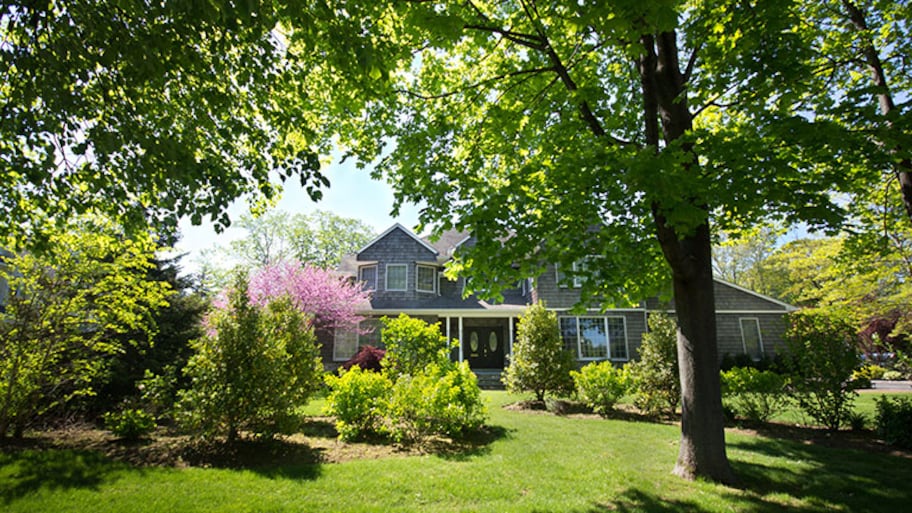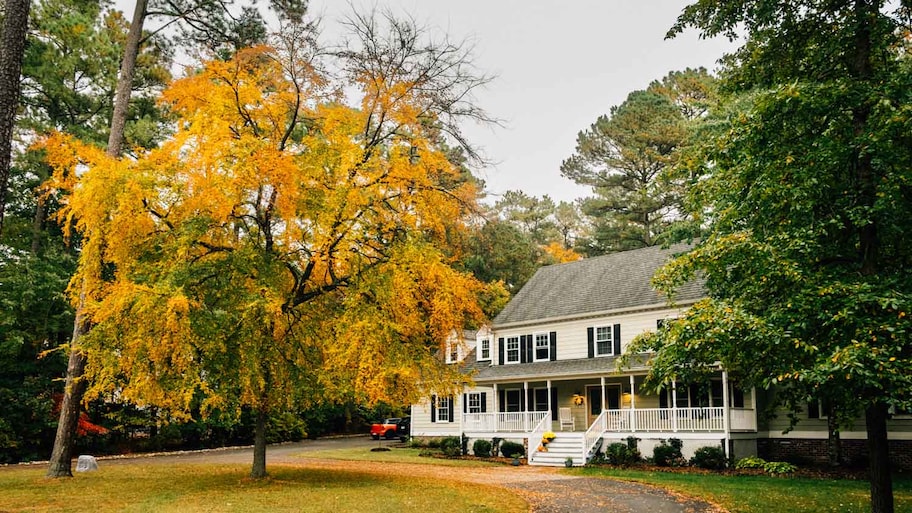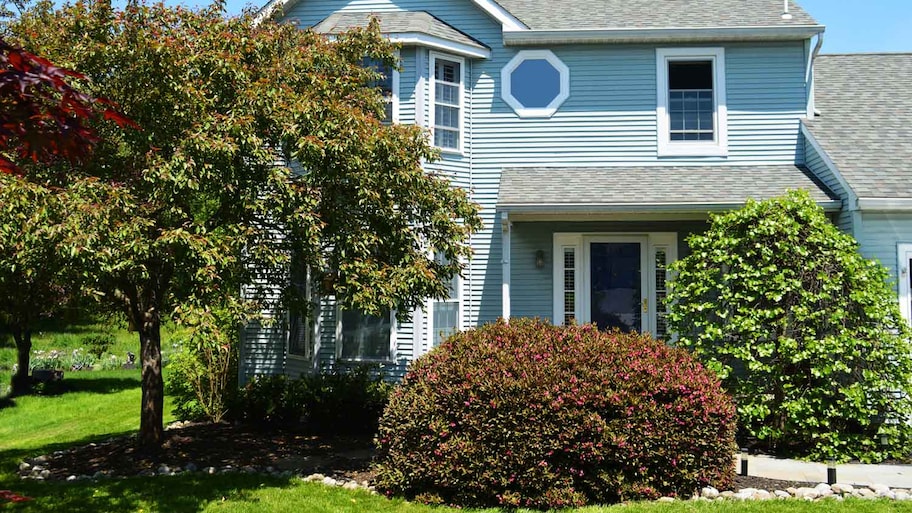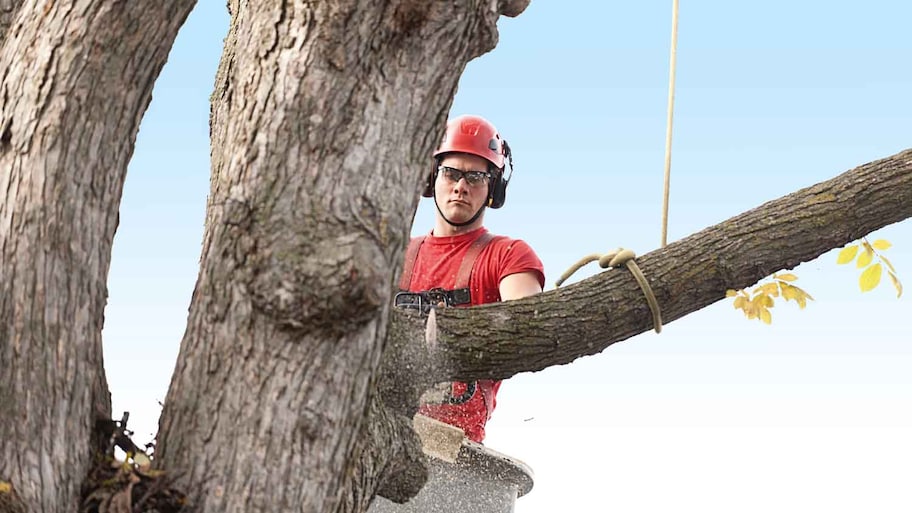How Much Does Tree Removal Cost? [2024 Data]
Normal range: $200 - $2,000
Tree removal costs an average of $750, but you could pay anywhere from $200 to $2,000, depending on the size and species of tree you need removed.


Tree removal costs anywhere from $200 to $2,000 or more, with the average price falling around $750. Shorter trees will cost closer to $150, while taller trees are harder to remove and can cost up to $10,000. Many tree removal professionals will charge by the foot, so removing a tall, shady elm tree will cost you more than a little flowering crape myrtle.
- Average
- $750
- Low end
- $150
- high end
- $10,000
Tree Removal Cost Calculator
Calculations based on the average size of a medium-sized pine tree, which is 50 feet. Calculations rounded to the nearest whole number.
| Quantity | Cost Range | |
|---|---|---|
| Removing Tree Cost | 1 pine tree | $250–$1,500 |
| Cleanup and Debris Removal | 1 pine tree | $70–$95 |
| Tree Removal Permit | 1 permit | $60–$150 |
| Optional: Stump Removal Cost | 1 stump | $100–$150 |
| Optional: Wood Chipping | 2 hour rental | $150–$250 |
| Total | $380–$1,745 | |
| Total with Options | $630–$2,145 |
Tree Removal Cost Factors
Tree removal costs vary widely based on height, the number of trees, the diameter of the trunks, and the tree’s accessibility. Whether you have an invasive tree species you want to remove or need it gone for landscaping purposes, take a look at the various costs of cutting down trees below.
Size of Tree
A tree's size affects several main tree removal cost factors: how long it takes to cut down, the accessibility to higher branches, and possible interference from other trees, power lines, or structures. For example, take a look at the primary tree removal price ranges by size:
| Tree Size | Average Cost |
|---|---|
| Up to 30 feet | $150–$450 |
| 30–60 feet | $450–$1,200 |
| 60–80 feet | $800–$1,500 |
| Over 80 feet | $1,000–$2,000 |
The price tends to increase once the tree grows over 80 feet high. At this stage, your team will need to bring in a crane to access its branches, which will cost about $500, including the truck rental and additional staff.
Also, keep in mind that trees get wider with age, making the diameter of their trunk more difficult and take longer to cut. In many species, branches and root systems also expand quite far in either direction, adding up to a possible multi-day project to safely remove the tree from the area without affecting other utilities.
Type of Tree

Some trees can grow to a very stately 100 feet tall or more. American ash, bur oak, and maple are considered to be more difficult to remove than others, and therefore, removing them costs more. Here are the costs for various types of tree removal:
| Type of Tree | Average Removal Cost | Important Details |
|---|---|---|
| Oak | $200–$2,000 | Some states forbid the removal of these heritage trees |
| Japanese Knotweed | $2,000–$10,000 | Highly invasive shrub, some states prohibit their possession |
| Aspen | $1,000–$1,800 | Enormous poplar tree, have complex root systems |
| Pine | $250–$1,500 | Older pine trees may have a tap root buried in the soil requiring specialist removal |
| Palm | $650–$1,500 | Extremely heavy, expensive to remove |
| Maple | $250–$2,000 | Can grow 100 feet high and have large branches |
| Ash | $250–$1,800 | Striking leaf colors in Autumn, can reach 80 feet in height |
| Cedar | $250–$1,500 | False cedars are common in North America while “true” cedars are native to places with high altitudes |
Health of the Tree
Poor health and structural issues can account for up to 15% of the final cost of tree removal. On the one hand, a diseased tree with soft or easily breakable wood can make it easier and less expensive to remove at just $400 to $900. On the other, a tree removal team may also need specialized rigging methods and equipment to bring it down safely.
Uprooted or fallen trees can cost as little as $300 to $500, as the team will just need to cut up and haul away the lumber. In this case, check your homeowners’ insurance policy to see if the plan covers tree removal. It may depend on the reason it fell and whether it affected the structure of your home.
Number of Trees

If you need multiple trees removed on a plot of land, a company may change by the acre instead of by specific tree count. The cost per acre will depend on how densely forested the acre is, the health of the trees, and their variety. You'll pay anywhere from $500 to $6,000 per acre for tree removal, up to $2,500 per acre for a lightly wooded acre and over $6,000 for a very densely wooded one.
Emergencies
Do you have a tree tipping precariously close to your home after a storm? In this situation, you can’t delay calling out the pros. Emergency tree removal usually comes at a premium, especially when services are in high demand, like they will be after a storm. How much you pay depends on the circumstances, but it isn’t unheard of to pay as much as $5,000 in an urgent situation.
Home insurance policies often cover the cost of cutting down trees when it relates to some storm damage, so it's worth checking your policy conditions.
If a tree has landed on your home, it's best to wait to have the tree removed until you research how to make an insurance claim for roof damage with your insurance company. Your homeowners insurance company may require an agent to come out to assess the damage in person before a claim can be approved. By removing the tree before alerting your insurance company, you may remove important evidence that allows adjusters to create a quote for your claim.
Fallen Tree
Expect to pay $75 to $150 to remove a fallen tree. The pros don’t have any climbing or careful cutting to do, so it’s usually just a case of chopping it up or mulching it before removal.
However, if you have a dead or dying tree, don’t let it get to the stage where it falls itself. It can do major damage to surrounding property, and you don’t want it to fall on family or unsuspecting passersby. Some local authorities will also charge fines for neglecting it.
Accessibility
Expect to pay 25% to 50% more to remove a tree in a tight, hard-to-reach, or unsafe spot. The job will be more challenging if the tree is close to power lines or has heavy branches hanging precariously over your property. Removing a big tree from a tight space in a small yard isn’t straightforward, either. Agreeing to remove fences or major obstacles before the pros come out can sometimes cut costs.
Additional Tree Cost Factors

Unforeseen circumstances and ongoing maintenance can result in other overheads. It’s worth keeping the following in mind.
Cleanup and Debris Removal
Most of the time, you aren’t going to want to keep the tree stump after the tree is removed. Removing a tree can also leave behind a trail of branches, bark, leaves, and the tree itself. The company might haul away your tree for about $70, put it through a chipper for an average cost of $95, or split it into firewood for your home at about $70.
Tree Removal Costs by State
Different states have different requirements, such as permits or environmental laws, that can change the cost of tree removal. Here are the rates for tree removal in several states across the U.S.
| Location | Average Cost |
|---|---|
| California | $650–$1,300 |
| Illinois | $535–$730 |
| Colorado | $350–$650 |
| Florida | $750–$1,500 |
| Maine | $515–$700 |
| New York | $750–$1,100 |
| North Carolina | $600–$900 |
| Texas | $300–$850 |
| Washington | $550–$800 |
| Washington, D.C. | $250–$700 |
Location
Costs for tree removal can also vary based on if you live on a city block or on a farm. In a city, services are closer to you and won’t likely charge for the time spent traveling to your property. If you live in a rural area, tree removal companies will charge about $0.50 per mile to travel to your home or a flat rate ranging from $50 to $200.
Machinery
When a compromised tree is in danger of falling on your roof, car, or surrounding property, tree removal pros will need to use a crane to remove branches safely. You can expect to pay an additional $500, or around $250 to $600 per day, for crane service, although the total cost can increase to about $6,000 to $7,000, depending on the difficulty of removal.
Permits
Permits are typically needed when removing trees larger than 10 feet. You can expect to pay $60 to $150 per permit. If your municipality requires a report from an arborist to obtain a permit, you can expect to pay an average of $860 to hire an arborist.
Location
Location is also a factor in tree removal costs, which range from $450 to $1,100 across the country.
| City | Cost Range ($) |
|---|---|
| New York, NY | $600–$1,100 |
| Los Angeles, CA | $550–$1,000 |
| Chicago, IL | $600–$1,050 |
| Houston, TX | $500–$900 |
| Phoenix, AZ | $525–$925 |
| Philadelphia, PA | $575–$1,025 |
| San Antonio, TX | $450–$850 |
| San Diego, CA | $550–$950 |
| Dallas, TX | $475–$875 |
| San Jose, CA | $600–$1,000 |
| St. Paul, MN | $450–$850 |
Additional Tree Service Costs

Several costs related to tree removal account for what happens to the stump after the tree is cut down or how to handle moving and trimming healthy trees.
Stump Removal
Stump removal is typically $100 to $150 for the first stump, with a deal on multiple stumps, such as $50 per additional stump removal. Trying to remove a tree stump without a grinder can be a labor-intensive project—and a dangerous one if you're trying to use a stump grinder yourself.
Tree Trimming and Pruning
If you decide against removing a tree entirely—or have more than one tree in your yard—you may also want to pay for pruning. The cost to prune a tree ranges from $75 to $1,500. How much you pay depends on whether it’s a small sapling or a mature monster.
Trimming is an annual undertaking and costs between $200 and $760, but it’s all about aesthetics rather than health.
Transplanting
The cost to transplant a tree starts at around $400, but it can go up to $5,000 or more for long-distance moves of large trees with sprawling roots. This might only be something you want to consider if you’ve got a tree with particular sentimental or prize-winning value.
How Much Does DIY Tree Removal Cost?

Tree removal is a dangerous job you should leave to skilled professionals. If you have the required skill set, you might save a couple hundred dollars going the DIY route and learning how to cut down a tree yourself, but the money saved doesn’t outweigh the associated risks. In some cities, it’s even illegal to remove a tree yourself.
Cost of Materials
Safety is essential, so many materials are directly related to keeping yourself protected. Expect to pay $200 to $300 for gloves, protective goggles, steel-toed boots, a hard hat, chainsaw chaps, and earplugs. You’ll also need a chainsaw ($50 to $150) and felling wedges ($20 for six).
Skills Required
Tree removal is best left to certified arborists, who can remove trees with minimal environmental impact while also avoiding risks of property damage or injury. Removing a tree requires navigating the potential interference of wires, underground pipes, and other infrastructure on the property that isn’t always in plain sight.
Risks
We can’t stress this enough: tree removal is dangerous. It’s almost always a better idea to hire a local tree removal pro. Many times, removing a tree, even by a professional, requires proper permits. If you don’t already have the necessary equipment, it can actually be even more expensive to handle this task on your own.
DIY vs. Hiring a Pro to Remove a Tree
If you opt to take down a medium-sized tree on your own, you can expect to pay $220 to $360 for all of the supplies needed instead of the average cost of $750 per tree for professional removal. However, the weight and height of some trees can make DIY tree removal extremely dangerous. When "felling" trees, professional tree removal experts use tools that include tree-rigging ropes, arborist blocks and pulleys, hooks, lowering devices, ladders, and specialized saws.
Tree removal experts also have arborist training that allows them to predict how a tree will fall. If you need to remove a large tree, it's best to hire a professional to avoid the risk of a tree falling on a person or structure. Additionally, it's recommended that you hire a tree expert to remove a tree that has been damaged due to storms or age-related decay.
How to Know if a Tree Needs Removal
There are a few signs to heed that might indicate a tree that should be removed:
The tree is dead, or over 25% of its branches are dead.
The trunk is hollowed or in otherwise poor health; a weak trunk cannot support the rest of a tree.
There are signs of pest infestation or fungus.
The tree is too close to power lines or an existing structure.
The tree is leaning 15 degrees or more, indicating a problem in its root system.
How You Can Save Money on Tree Removal
There are a few ways to save on tree removal—the first is confirming that you need the tree removed in the first place. Here are ways to save on tree removal:
Contact an ISA Certified Arborist to see if the tree needs removal.
Get quotes from at least 3 tree removal specialists.
Negotiate tree removal costs by removing multiple trees at once.
Book during the off-season—spring, summer, and early fall are the busiest seasons.
Remove limbs and branches yourself.
Clear the debris yourself.
Make the area accessible by removing bird baths, fences, and yard items.
Save trunks and limbs and cut them into firewood.
Leave the stump.
How Angi Gets Its Cost Data
Home is the most important place on earth, which is why Angi has helped more than 150 million homeowners transform their houses into homes they adore. To help homeowners with their next project, Angi provides readers with the most accurate cost data and upholds strict editorial standards. We extensively research project costs to develop the pricing data you see, so you can make the best decisions for you and your home. We rely on reputable sources, including the U.S. Bureau of Labor Statistics, academic journals, market studies, and interviews with industry experts—all to ensure our prices reflect real-world projects.
Want to help us improve our cost data? Send us a recent project quote to [email protected]. Quotes and personal information will not be shared publicly.
Frequently Asked Questions
For small trees, tree removal should take just a couple of hours to complete. Assume that a mid-sized tree will take between four and eight hours, depending on the extent of the equipment required and the health of the tree. Remember to add up to two hours for stump removal. Larger trees could take as long as one or two working days, about eight hours each.
A small, healthy tree growing close to your home isn’t usually a problem. However, it’s worth speaking to an arborist if you have a tree within 15 to 20 feet of your home that isn’t in such good health or is encroaching on your home’s perimeter. The last thing you want is branches burrowing their way under tiles, causing a roof leak.
Unless it’s dead or dangerous, think twice about cutting down a tree in your yard. They’re good for health, well-being, wildlife, and the environment. Plus, local authorities often have regulations prohibiting the removal of trees, especially protected species or individual trees with historical value.

